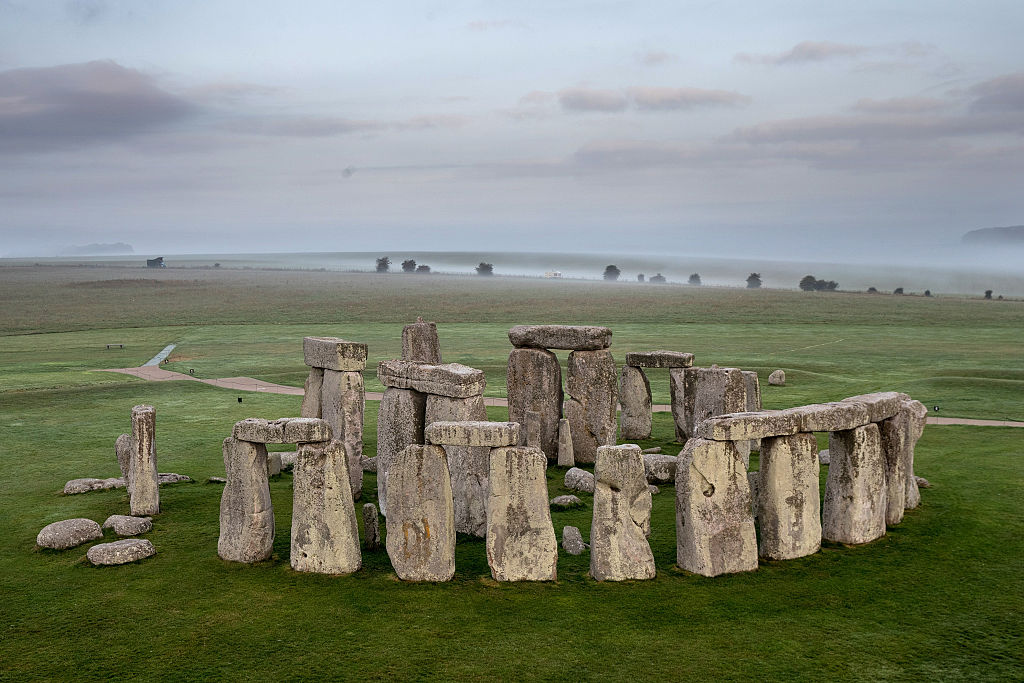Viking Fortresses, Burial Mounds in Mongolia, and Other Sites Added to UNESCO’s World Heritage List
The World Heritage Committee, a cultural body within the United Nations, has inscribed 13 sites of historical or artistic significance in countries including Ukraine, China, Ethiopia and Palestine to its list of protected world heritage.
The committee, comprising representatives from 21 UN member states, voted on the additions on Sunday, during the second week of its meeting in Riyadh, Saudi Arabia; the group also approved the extension of two existing sites.
Among the list are 54 historical Iranian caravanserais (a sort of roadside inn or shelter for travelers) dotted across 24 provinces in the country. The caravanserais line the network of trade routes linking Asia with Africa and Europe, the most famous being the Silk Road.
The inscription of the Tell es-Sultan archaeological site, located near the Palestinian city of Jericho, in the Israeli-occupied West Bank, provoked ire from Israel, who quit UNESCO in 2019. In a statement published Sunday by the Jerusalem Post, a spokesperson for the government called the inclusion “another sign of [UNESCO’s] cynical use of the Palestinians.”
In a surprising move, Venice was omitted from the list despite the dire state of its very foundation. This past July, the UNESCO World Heritage Committee said the Italian city was not taking strong enough steps to mitigate the consequences of over tourism and climate change, and had recommended it be added to its endangered heritage list. The mayor of Venice, Luigi Brugnaro, appeared pleased with the vote’s outcome. “Great Victory at UNESCO…Venice is not at risk,” he tweeted on Thursday. He had previously described the attempt to list the city as endangered as “purely political.”
Last week, the committee added more Ukrainian sites to its list: The Saint Sophia Cathedral and the Kyiv-Pechersk Lavra monastery in Kyiv, as well as the historic center of the city of Lviv. The decision was made “due to the threat of destruction the Russian offensive poses,” according to a statement from UNESCO.
Below are the world heritage sites newly recognized as endangered by UNESCO.
-
Volcanoes and Forests of Mount Pelée and the Pitons of Northern Martinique, France

Image Credit: Getty Images/iStockphoto A series of volcanic eruptions between 1902-1905—a landmark event in the history of volcanology—left a lasting legacy on the culture of Martinique, in particular the town of St. Pierre. Adding to the cultural significance of the region is the abundance of globally threatened species like the Martinique Volcano Frog, the Lacépède’s Ground Snake, and the endemic Martinique Oriole (Icterus bonana).
-
Forest Massif of Odzala-Kokoua, Congo

Image Credit: Godong/Universal Images Group vi In its citation, UNESCO writes that this swath of greenery is “an excellent example, at an exceptionally large-scale, of the process of post-glacial forest recolonization of savanna ecosystems.” Those converging ecosystems are the Congolese Forest, Lower Guinean Forest, and Savanna, each of which brings a diverse but dwindling number of flora and fauna. It’s also the most important stronghold for forest elephants in Central Africa.
-
Old town of Kuldīga, Latvia

Image Credit: Gamma-Rapho via Getty Images The historic town of Kuldiga, located in the western part of Latvia, is a remarkably well-preserved example of the melding of traditional Latvian architecture and the foreign-influenced styles. This was an important administrative hub for the region between the 16th and 18th centuries, and the depth of this cultural exchange is evident on every street corner.
-
Jewish-Medieval Heritage of Erfurt, Germany

Image Credit: Photo: Jens Kalaene/dpa (Photo by Jens Kalaene/picture alliance via Getty Images) Nestled within the historic center of Erfurt, the capital city of Thuringia, this property comprises three landmarks: the Old Synagogue, the Mikveh, and the Stone House, all of which illustrated the mingling of the Erfurt’s Jewish community with the Christian majority in Central Europe between the end of the 11th and the mid-14th century.
-
Viking-Age Ring Fortresses, Denmark

Five archaeological sites comprise a complex of large-scale ring-shaped Viking-Age fortresses that share a curious geometric design. The fortresses (seated at Aggersborg, Fyrkat, Nonnebakken, Trelleborg and Borgring) were constructed between about 970 and 980 CE, and were built near significant land and sea routes and made from the natural topography of the region, so they appear to seamlessly rise from the soil.
-
Tr’ondëk-Klondike, Canada

Located along the Yukon River, Tr’ondëk-Klondike sits within the homeland of the Tr’ondëk Hwëch’in First Nation who inhabit the sub-arctic region of Northwest Canada. Archaeological and historic source detail the unprecedented societal changes forced upon the Indigenous communities as result of the the Klondike Gold Rush at the close of the 19th century.
-
The Persian Caravanserai, Islamic Republic of Iran

Image Credit: (Photo by Eric Lafforgue/Art in All of Us/Corbis via Getty Images) Among the list are 54 historical Iranian caravanserais (a sort of roadside inn or shelter for travelers) dotted across 24 provinces in the country. The caravanserais line the network of trade routes linking Asia with Africa and Europe, the most famous being the Silk Road.
-
Santiniketan, India

Image Credit: Universal Images Group via Getty Influential poet and philosopher Rabindranath Tagore established Santiniketan in West Bengal in 1901 as a residential school and center based on ancient Indian art traditions and the hope that through learning, people could transcend religious and cultural differences. A so-called ‘world university’ was established here in 1921 based on this unity of humanity, or “Visva Bharati”. Despite the times, the buildings rebuffed against British colonial architectural style and trends in European modernism in favor of experiments in pan-Asian modernity.
-
Cultural Landscape of Old Tea Forests of the Jingmai Mountain in Pu’er, China

Image Credit: Xinhua News Agency via Getty Ima This landscape was cultivated over a thousand years by the Blang and Dai peoples, and is abundant in tea groves. “The traditional understorey cultivation of old tea trees is a method that responds to the specific conditions of the mountain’s ecosystem and subtropical monsoon climate, combined with a governance system maintained by the local Indigenous communities,” UNESCO notes.
-
Gaya Tumuli, Republic of Korea

Image Credit: © World Heritage Nomination Office for the Gaya Tumuli Gaya Tumuli is home to archaeological cemetery sites with burial mounds common to the Gaya Confederacy, which formed in the southern part of the Korean Peninsula from the 1st to the 6th century CE. The spatial hierarchy and aesthetic distinctions have taught researchers leagues about the Gaya political system.
-
Deer Stone Monuments and Related Sites of Bronze Age

Image Credit: (Photo by Wolfgang Kaehler/LightRocket via Getty Images) From about 1200 to 600 BCE, these stone markers carved with stags and deers played important roles in the funerary rites of central Mongolians. They almost always stand in complexes that include ritualistic mounds and khirgisüürs and sacrificial altars.
-
Archaeological Site of Ancient Lingapura or Chok Gargyar, Cambodia – Koh Ker

Image Credit: Cambodia – Koh Ke The archaeological site of Koh Ker is a complex of temples and sanctuaries scattered with sculptures, wall paintings, and inscriptions. Koh Ker was one of two rival capitals of the Khmer Empire, the other being Angkor, and held sole power from 928 to 944 CE.
-
The Gedeo Cultural Landscape, Ethiopia

Image Credit: Photo by Eric LAFFORGUE/Gamma-Rapho via Getty Images This area of “agroforestry” is situated along the eastern side of the Main Ethiopian Rift, on the steep edge of the Ethiopian highlands, all land that has sacred significance to its longtime caretakers, the Gedeo people. Traditional cultivation techniques of the Gedeo protects the highly valuable indigenous enset, under which coffee grows.
-
Silk Roads: Zarafshan-Karakum Corridor, Tajikistan, Turkmenistan, Uzbekistan

Image Credit: © IICAS
The Zarafshan-Karakum Corridor is a vital section of the Silk Road in Central Asia, connecting the ancient trade route from every direction. Running from east to west along the Zarafshan River, it also intersects a fertile river valley, desolate desert, and watery oasis.


